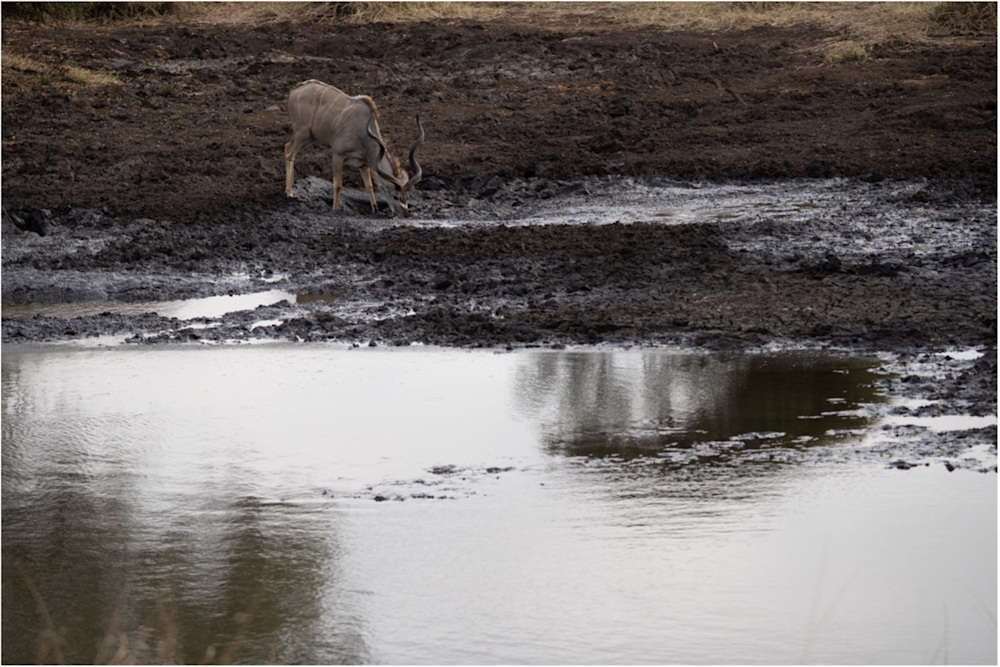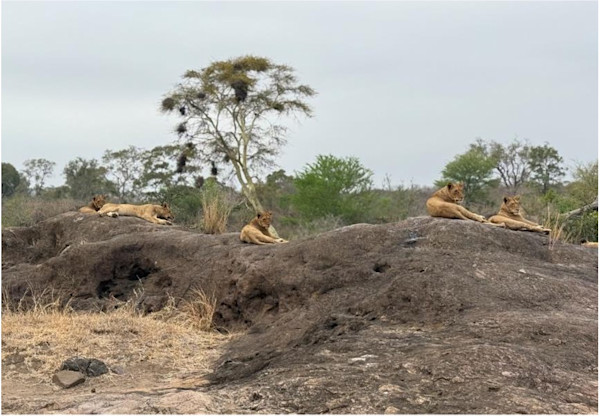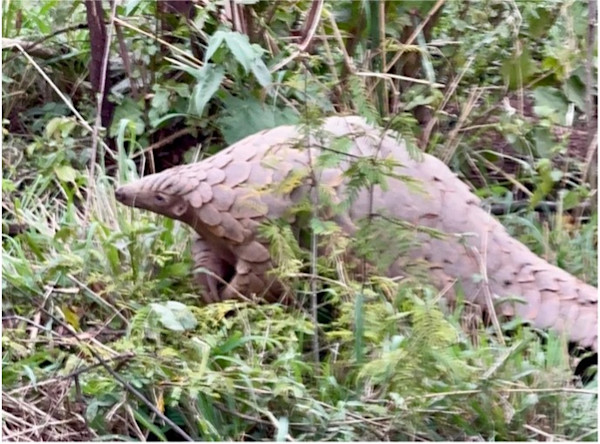June 2025
Biodiversity
Dry season and animal movement at Singita Kruger National Park
in BiodiversityShare:
Dry season and animal movement at Singita Kruger National Park
The dry season in Kruger National Park, which runs from May through September, is widely recognized as the most rewarding time for game viewing. During these cooler, rainless months, the landscape undergoes a dramatic transformation that enhances both visibility and wildlife activity, making it the prime period for safari experiences across the park.
With daily temperatures averaging in the mid-to-high 20°Cs and a near-complete absence of rainfall, the lush green vegetation of the wet season gives way to an open, drier landscape. The dense undergrowth and thick grasses recede, revealing a more accessible terrain where animals are no longer hidden from view. This seasonal thinning of the bush makes it significantly easier to observe a wide range of species—both large and small—as they move through the savanna.

Among the most sought-after sightings are the Big Five: lion, leopard, elephant, buffalo, and rhinoceros. However, the dry season also offers excellent opportunities to see plains game such as impalas, kudus, and zebras, as well as predators like cheetahs, hyenas, and wild dogs. Birdwatchers will find plenty to marvel at too, including rare species and vibrant residents like the lilac-breasted roller, whose colourful plumage stands out vividly against the earth-toned backdrop. With fewer insects during this time, bird sightings are clearer and more frequent, and the overall safari experience becomes more comfortable for guests.
At Singita Kruger National Park, the setting of the lodges takes full advantage of the dry season’s natural visibility. Both lodges are uniquely positioned on a private concession at the confluence of the N’wanetsi and Sweni Rivers, providing elevated views across the open plains and riparian zones. Floor-to-ceiling glass walls in the suites allow guests to watch animals from the comfort of their rooms, while the lodge’s rooftop decks offer panoramic perspectives perfect for wildlife observation throughout the day.
The river systems below the lodge serve as essential lifelines during the dry season. As water becomes scarce across the broader landscape, animals increasingly congregate around reliable sources such as the N’wanetsi River, Sweni River, Gudzani Dam, and Pony Pan. This seasonal gathering of species leads to some of the most concentrated wildlife activity of the year, as elephants, antelope, and buffalo arrive daily to drink, bathe, and feed in the surrounding areas.
The concentration of wildlife around these permanent water sources is one of the defining features of the dry season. Elephants often dominate the scene, arriving in herds to quench their thirst and cool off with dust baths. Buffaloes appear in large numbers, their movements often kicking up clouds of dust that add to the drama of the setting. Hippos wallow in shrinking pools, while crocodiles bask silently on the riverbanks. Predators, in turn, take advantage of the increasing density of prey around waterholes, leading to heightened chances of witnessing natural interactions—sometimes peaceful, sometimes predatory.
Unlike in the public areas of Kruger, the Singita concession is private, which means there are fewer vehicles and less disturbance at sightings. This exclusivity allows guides to take their time at each encounter, offering guests a deeper understanding of animal behaviour and ecology, as well as more time to photograph or simply observe without interruption.
As the roads dry out and the ground hardens, animal tracks become more visible and more informative. Guides and trackers rely heavily on footprints, droppings, and subtle signs to interpret recent activity. This makes the dry season an excellent time to learn about tracking, as the dust-covered terrain clearly records the movements of leopards, lions, and other elusive species. Morning and late afternoon game drives often begin with a review of overnight tracks, leading to exciting pursuits through the open bush.
Large mammals become more mobile during the dry season, shifting their home ranges to stay close to water. Elephants, buffaloes, and zebras are particularly affected, often moving in predictable patterns that guests may observe over multiple days. Even less frequently seen animals, such as the white rhino, tend to become more localized, increasing the chances of sightings.
As the sun dips below the horizon, the dry season delivers one final gift: crystal-clear night skies. With minimal humidity and virtually no light pollution, the stars are spectacular! After an evening game drive, guides often stop in open areas for a short stargazing session, pointing out constellations like the Southern Cross, Scorpius, or the glowing band of the Milky Way. The cooling temperatures and stillness of the bush create a perfect atmosphere for reflection at the end of a wildlife-filled day.

The dry season in Kruger is more than just a popular time for safaris—it’s a natural convergence of wildlife, visibility, and comfort. The thinning vegetation, reliable water sources, and cooler temperatures all work together to create optimal conditions for observing animals. Whether you’re watching elephants from your suite, tracking lions at dawn, or gazing at stars after sunset, the dry season at Singita Kruger National Park provides a wildlife experience that is as educational as it is unforgettable.

By Evidence Nkuna
Field Guide


